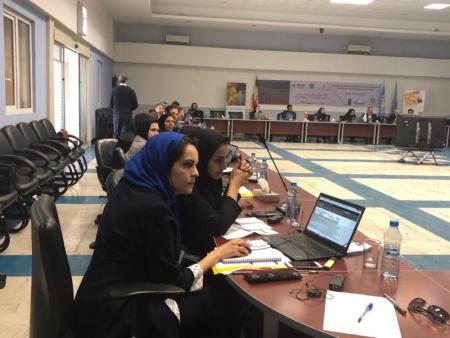
The training workshop in Tehran brought together participants from central and local government, UN, humanitarian organizations, academia and the media (c) UNDRR
By The Regional Office for Asia and the Pacific
TEHRAN, 30 April 2019 – Recent floods in Iran have destroyed infrastructure, flooded farms, and displaced almost 300,000 people. Officials have estimated damages to be around US$2.5 billion. The disaster is a setback to the efforts being undertaken by the government and partners in enhancing disaster resilience in the country.
While international agencies are gearing up to provide coordinated support Iran on floods response, long-term measures need to be scaled-up to prevent such disasters from reoccurring. The disaster added a new sense of urgency to the joint UN training workshop held in Teheran from April 22 to 24 to build the capacity of Iran’s national agencies to reduce disaster risk.
In partnership with Iran’s Planning and Budget Organization and the National Disaster Management Organization (NDMO), the workshop was organized by the UN Office for Disaster Risk Reduction (UNDRR), the Asian and Pacific Centre for the Development of Disaster Information Management (ESCAP-APDIM), and the UN Development Programme (UNDP). The three UN entities jointly lead the UN Regional Coordination Mechanism’s working group on disaster risk reduction and resilience.
The three-day workshop provided training to strengthen Iran’s disaster loss databases and reporting through the Sendai Framework Monitor. The information gained from tracking disaster losses, especially frequent small-to-medium scale disasters, is critical for the development of an evidence-based disaster risk assessment and supporting damage and loss assessments. Moreover, the availability of varied data helps officials identify previously unnoticed trends and spotlight cross-cutting issues that impact disaster risk.
“The floods were not just caused by the high level of precipitation, but other factors in the built environment, such as deforestation. We need to understand the risk to manage it. This calls for more than just meteorological data. It also requires information on who is at risk, including demographic information, and what are their specific vulnerabilities,” said Mr Mahdi Rahmatinejad, Head of the Disaster Information Centre at the NDMO.
As Iran lies in one of the most seismically active zones, earthquakes cause the greatest mortality, and together with droughts and floods, result in an average of US$ 5 billion of losses every year according to UNISDR estimates. Nevertheless, Iran has been making steady progress on scaling up disaster risk reduction and soon the legislature is expected to pass a new law on disaster management, which will make the head of the NDMO accountable to the President and mandate that the country have a national disaster risk reduction strategy.